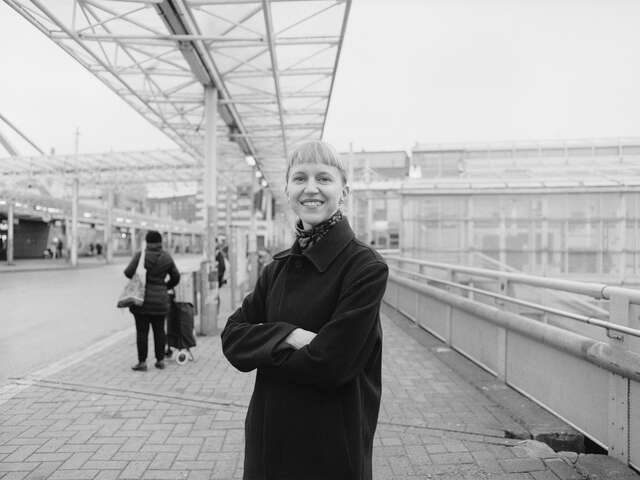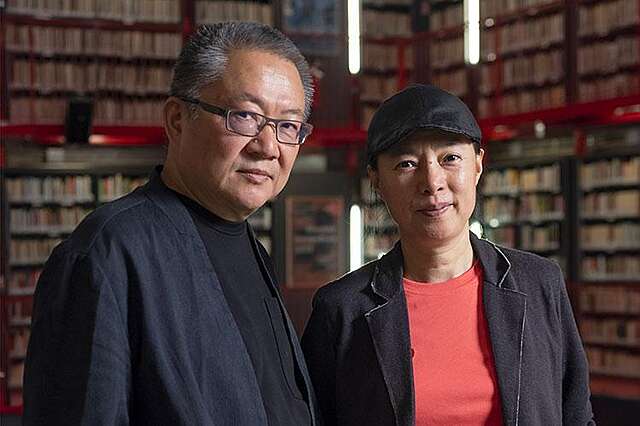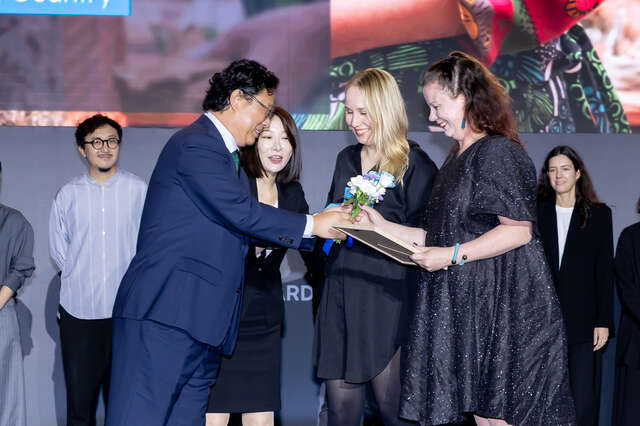The Huussi exhibition received a record audience at the Biennale Architettura in Venice
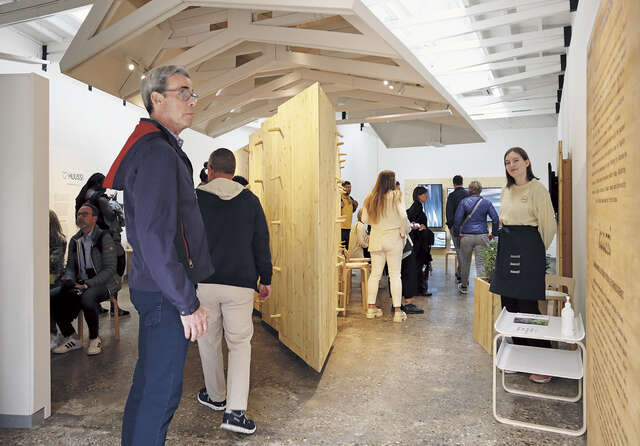
Miina Jutila
The six-month-long 18th International Architecture Exhibition of La Biennale di Venezia closed last Sunday. The Pavilion of Finland’s exhibition far exceeded visitor expectations and received record media attention.
La Biennale di Venezia announced on its website after the closing of the Biennale Architettura yesterday that the exhibition titled The Laboratory of the Future, curated by Lesley Lokko, attracted almost 300,000 visitors, including the invited guests during the opening week. The audience was down slightly from the previous edition in 2021, but over the long term, the Biennale Architettura has seen a steady increase in visitor numbers since the first dedicated architecture exhibition in 1980.
The Pavilion of Finland, on the other hand, once again saw record-breaking attendance, with more than 140,000 visitors to the Huussi – Imagining the future history of sanitation exhibition over six months. Both previous Biennale exhibitions produced by Archinfo also set attendance records, but this time, there was an astonishing 31 per cent increase in visitor numbers from the previous edition. Such a remarkable increase was beyond expectations.
"We are more than pleased with the enthusiastic reception the Huussi exhibition has received. Even more gratifying than the number of visitors is the fact that the exhibition seemed to genuinely interest the public and the feedback was very positive. The biggest thanks for this go to curator Arja Renell, who came up with the exhibition idea, and her team, The Dry Collective. Also, the Finnish students of architecture, landscape architecture and interior design who worked in the pavilion for six months deserve warm thanks for their excellent work as ambassadors for Finland and Huussi", says Katarina Siltavuori, Commissioner of the exhibition and Director of Archinfo.
Huussi stays in Venice, video works travel the world
Visitor feedback to Huussi, conceived by curator Arja Renell and The Dry Collective, reiterated the importance of the exhibition’s message, which focuses on water conservation and nutrient recycling, and that it was presented in an understandable, memorable and fun way.
The centrepiece of the exhibition was an architecturally interesting dry-toilet installation made from recycled materials using modern wood technology, with all the necessary functional components: a composting refuse container supplied by Biolan and a handbasin and custom-made toilet seat top with a box for cover material produced by Durat. The Finnish students, who were the exhibition invigilators, were asked countless times how the composting toilet works and where to get the containers and tops.
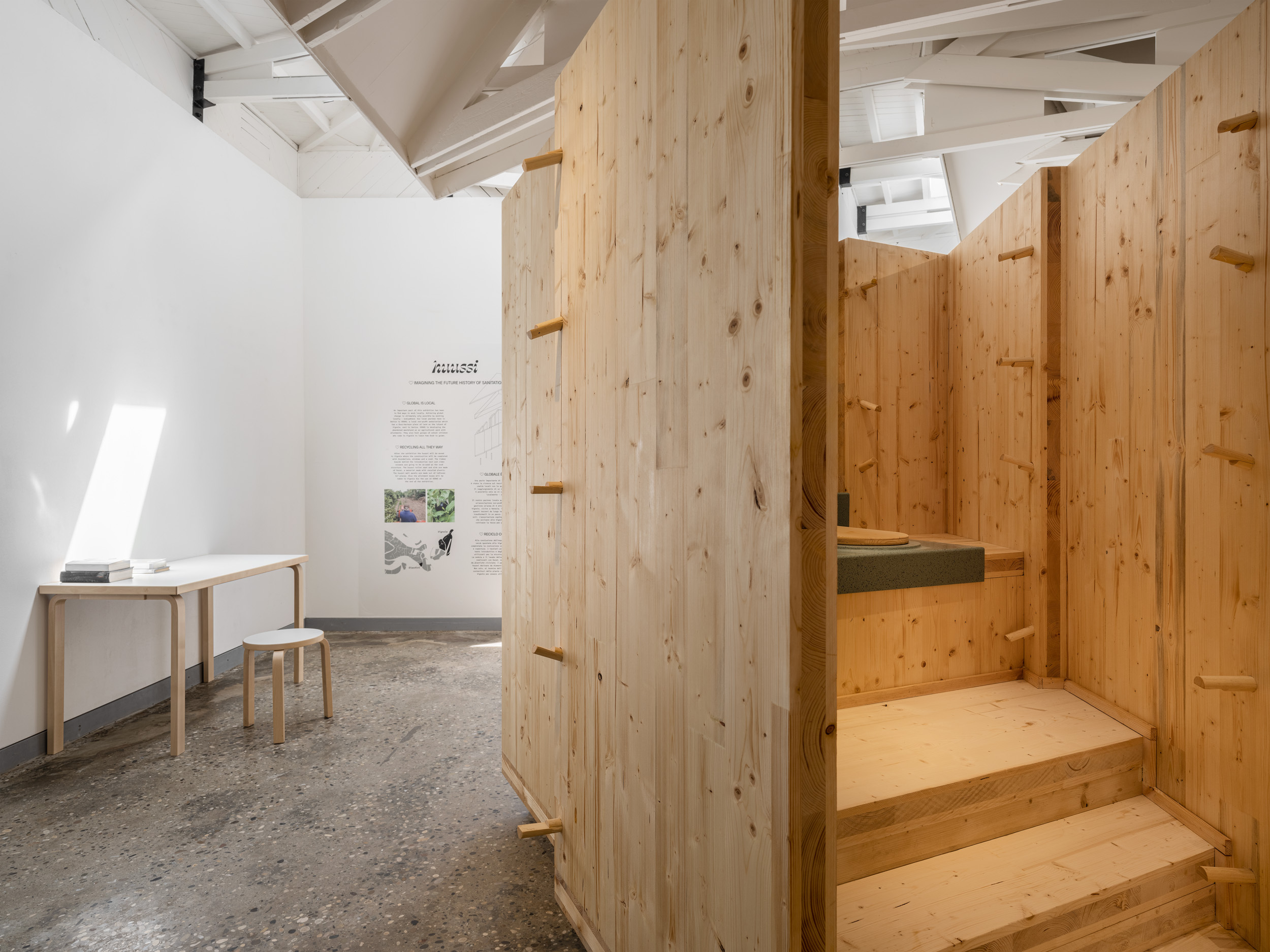
After the Biennale, the huussi installation assembled of wooden CLT elements will be dismantled and transported to the nearby island of Vignole, where it will be reassembled in the spring for use by a local residents' association. The Veras association has started allotment gardening on the island, and the huussi will serve not only as a much-needed facility, but also as a local pilot for composting and nutrient-rich soil production.
The more profound message of the Huussi – Imagining the future history of sanitation exhibition was the potential of new sanitation systems and technologies in urban environments and at an urban scale. The message was conveyed through three video pieces, the main piece being a fictional documentary, a mocumentary, interviewing future researchers. Spread over five screens, the work provoked thought but also amusement among the audience, for which it was praised in the visitor feedback. The feedback suggested that presenting a serious subject in a humorous way made people stop and watch the entire film and then explore the exhibition in more depth.
Scripted by Arja Renell and Antero Jokinen, directed by Pekka Hara and produced by Henkka Hämäläinen (Breakfast), The future history
video work will next travel to Germany, where it will be shown as part of the exhibition Water Pressure – Designing for the Future at the Museum für Kunst & Gewerbe Hamburg (MK&G) from 15 March to 13 October 2024.
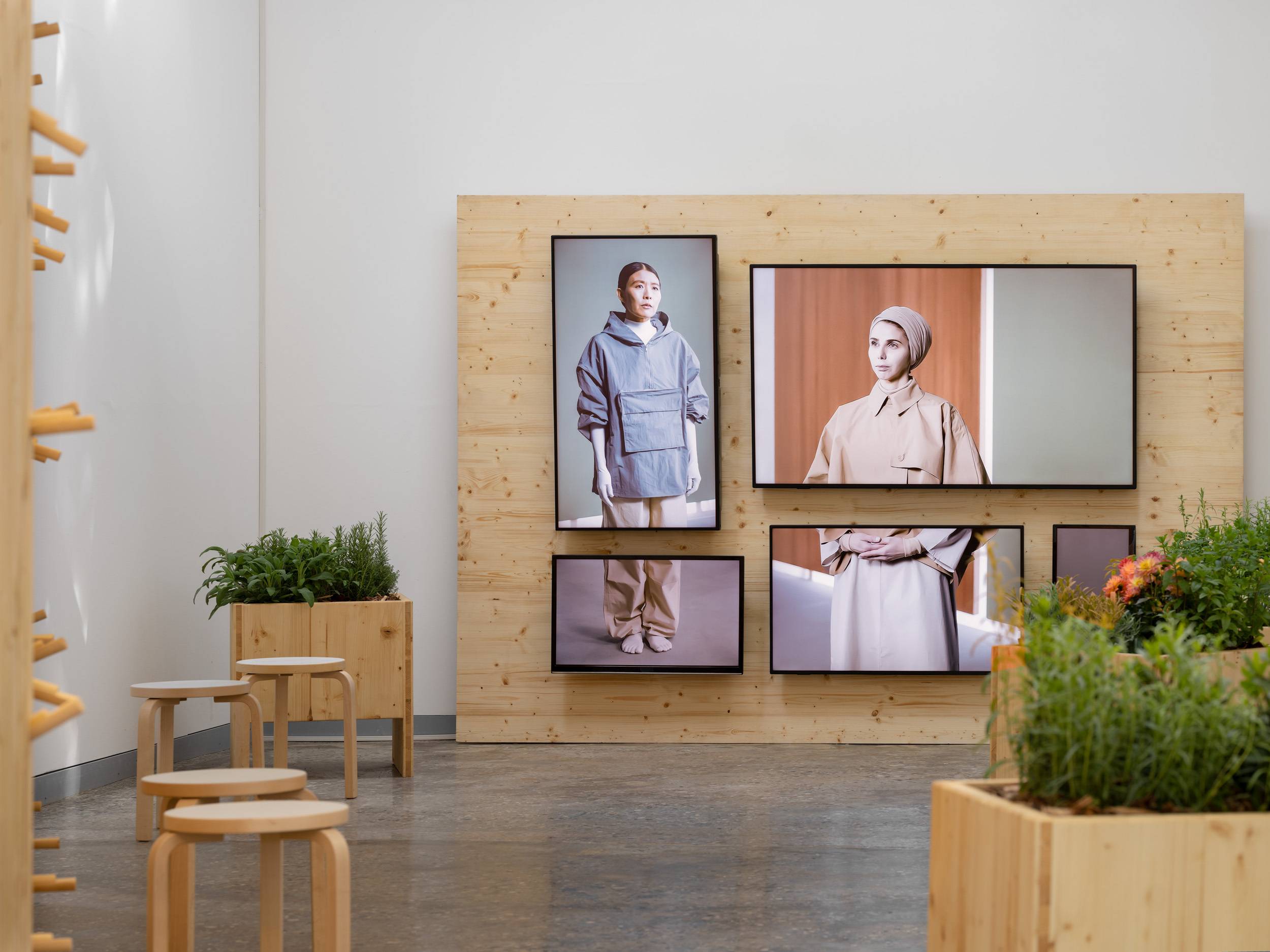
The media was fascinated by Huussi
The insightful theme of the Huussi exhibition also caught the media’s attention. In the context of the Finnish pavilion, a record number of international media hits were reported, reaching more than 550 million readers. Pieces based on in-depth interviews were published, among others, by Bloomberg CityLab (reach of 25 million), Fast Company (4.3 million) and Monocle's The Urbanist podcast (92 500). Other key media included The New York Times, The Guardian, CNN, Dezeen, Domus, El Pais, The Telegraph, Wallpaper and Elle Decor.
One of the exhibition's ambitious, albeit light-hearted, aims was to elevate the word ‘huussi’ to the status of a Finnish word known throughout the world, alongside ‘sauna’ and ‘sisu’. One could argue that this goal was achieved, as The New York Times' @NYT_first_said account on X (Twitter), highlighting all new words that appear in the paper, published ‘huussi’ as a new word on 22 May.
In connection with the Huussi exhibition, an exhibition publication named Death to the flushing toilet (Arvinius + Orfeus Publishing) was published. Edited by Arja Renell, with visual design by Antero Jokinen, the book contains expert articles on the history of sanitation, nutrient recycling and new sanitation technologies, among others. During the six months of the exhibition, the 112-page paperback sold out several times in Biennale bookshops. The availability can be inquired from the publisher (ao-publishing.com) or Archinfo.
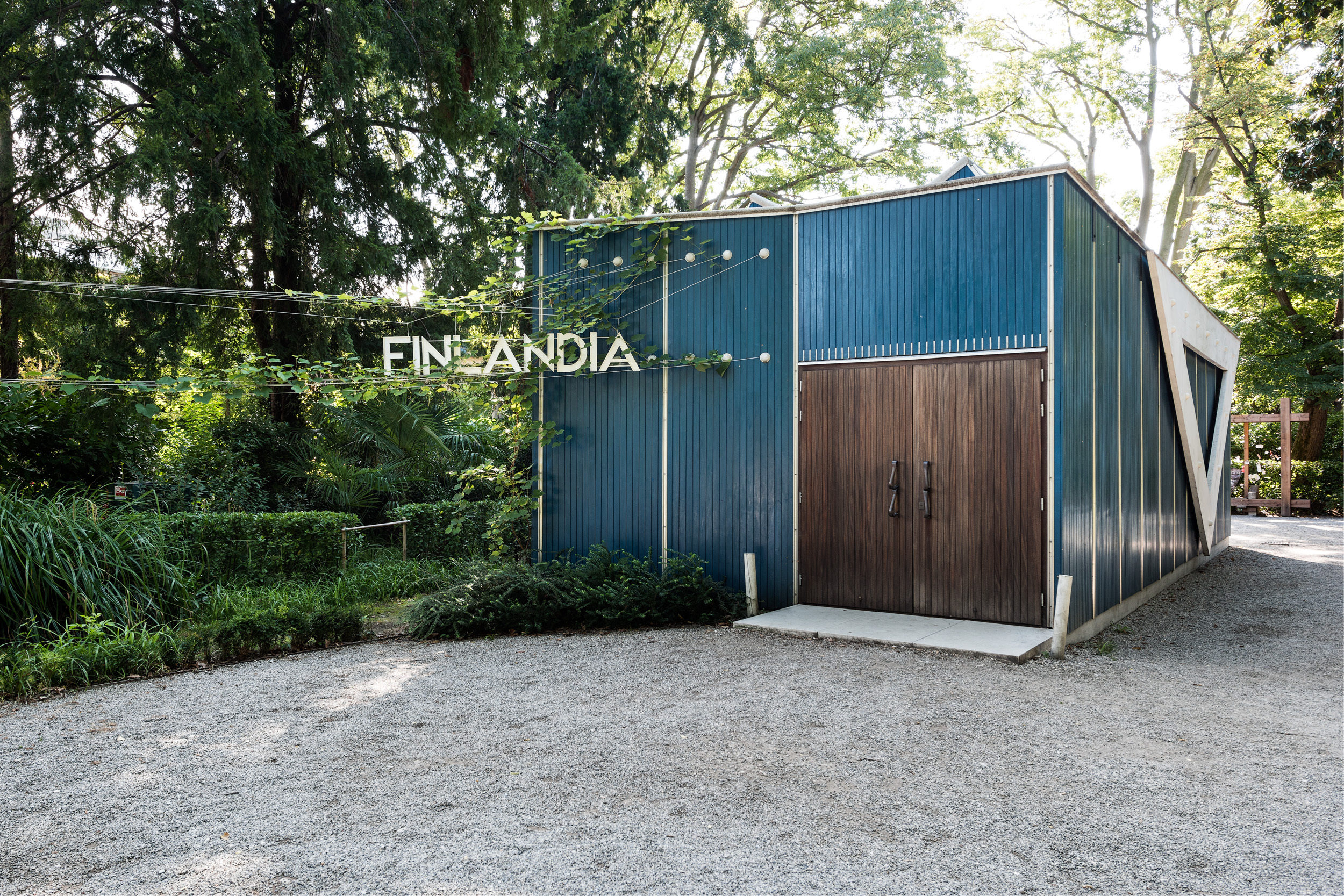
Warm thanks to makers and partners
The Dry Collective exhibition team included architect and artist Arja Renell, architects Emmi Keskisarja, Barbara Motta, Eero Renell and Janne Teräsvirta, and visual designer Antero Jokinen. Archinfo's exhibition team consisted of Director Katarina Siltavuori, Project Manager Sini Parikka (until 30.8.2023) and Ulla Kallakivi (from 1.9.2023), Project Coordinator Francesco Raccanelli and Head of Communications Miina Jutila.
The exhibition was selected through an open call, with a selection panel consisting of curator Taru Elfving, Professor Andres Lepik, architect Helena Sandman and Commissioner Katarina Siltavuori.
The pavilion interns were Remi Leskelä, Amanda Puerto-Lichtenberg, Johanna Salmela, Alex Salminen, Henna Salminen, Sanni Teräväinen, Tytti Tuomola, Emilia Utti and Stella Vahteristo. The internship programme was carried out in cooperation with the architecture departments of Aalto University, the University of Tampere and the University of Oulu. The professors in charge were Panu Lehtovuori, Janne Pihlajaniemi and Jenni Reuter.
Andres Lepik wrote the foreword to the exhibition publication and in addition to editor Arja Renell, the articles were written by Juha Helenius, Annika Johansson, Ben James, Taro Korhonen, Virve Kuusi, Suvi Lehtoranta, Barbara Motta, Katariina Mäenpää, Elina Nummi, Paula Pennanen-Rebeiro-Hargrave, Eero Renell, Riku Ruotsalainen and Eeva-Liisa Viskari. Miina Jutila and Jonathan Mander were the book’s subeditors, Antero Jokinen was the art director, and Jens Andersson did the layout. The book was published by Marie Arvinius.
The exhibition’s main funder was the Ministry of Education and Culture, Finland. The exhibition was supported by the Finnish Cultural Foundation. The exhibition was also supported by Artek, Biolan, City of Helsinki, Durat, Embassy of Finland in Rome, Fiskars, Helsinki Distilling Company, LAB Institute of Design and Fine Arts, Stora Enso and Vainio.Seitsonen. Content collaborators were the City of Helsinki, Finnish Environment Institute (Syke), Global Dry Toilet Association of Finland – Huussi ry, Helsinki Region Environmental Services HSY, ING Media, LAB Institute of Design and Fine Arts, Reaktor, University of Helsinki and UN-Habitat.
In addition, the exhibition project involved many experts, material suppliers, builders and contributors. Archinfo wishes to extend a warm thank you to everyone who made the Huussi exhibition, its accompanying programme and the exhibition publication possible.
